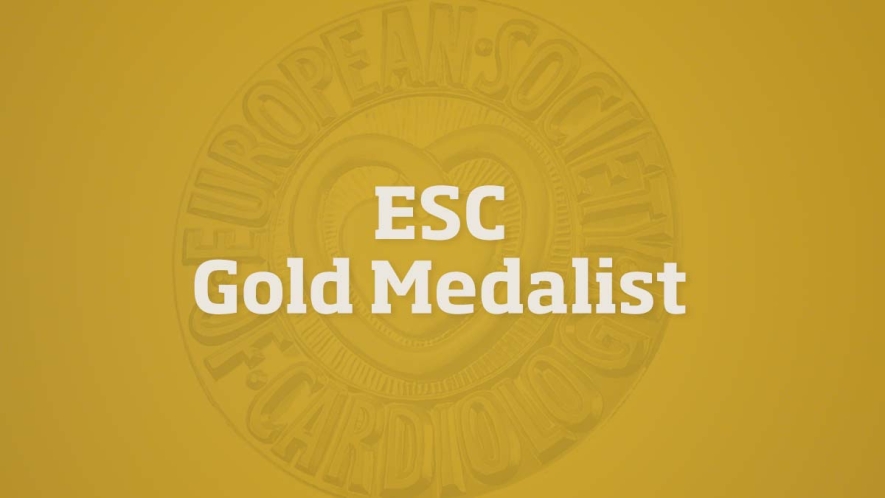ESC Gold Medal Award winner: Professor Akira Endo
27 Aug 2021
 ESC Gold Medalist
ESC Gold Medalist Today, statins are among the most widely prescribed medications worldwide. One of this year’s ESC Gold Medal Award winners, Professor Akira Endo, was responsible for the discovery of the first statin almost 50 years ago.
Prof. Endo grew up in rural Northern Japan but had ambitions to become a scientist. After gaining a degree from the Faculty of Agriculture at Tokohu University, Prof. Endo began working for the pharmaceutical company, Sankyo in Tokyo in 1957.1 Inspired by Alexander Fleming and the discovery of penicillin, Prof. Endo was interested in exploiting the properties of other fungus-derived products. In 1959, he made his first discovery when he identified a new enzyme from the grape-parasitic fungus Coniothyrium diplodiella, which was commercialised for removing pectins from contaminated wines and ciders.
Prof. Endo then turned his attention to cholesterol biosynthesis. He spent two years researching phospholipids at the Albert Einstein College of Medicine in New York City, before returning to Sankyo’s research laboratories in Tokyo in 1968. It was here he speculated that some fungi might produce antibiotics to inhibit the enzyme responsible for the rate-limiting step in cholesterol synthesis, 3-hydroxy-3-methyl-glutaryl (HMG)-CoA reductase, possibly as a defence mechanism against other microbes. In the early 1970s, Prof. Endo screened 6,000 fungal extracts and identified the potent and competitive HMG-CoA reductase inhibitor, compactin (ML-236B, also called mevastatin) from Penicillium citrinum.
The statin success story hit an early hitch when it was found that compactin was not effective at reducing cholesterol levels in rats. However, compactin then demonstrated substantial lowering of plasma cholesterol in other animal models, namely chickens, dogs and monkeys, and compactin’s development was restarted.
Next came a second challenge, with the finding of microcrystalline structures in liver cells of rats fed large amounts of compactin. After another nine months of research, the structures were identified as harmless cholesterol microcrystals. Compactin was then tested for the first time in humans, in a small number of patients with severe familial hypercholesterolaemia.
The discovery of compactin led other pharmaceutical companies to search for statins. In 1978, Merck isolated a compactin-like substance from Aspergillus terreus and it was around a similar time that Prof. Endo discovered the same compound from Monascus ruber. Lovastatin was born. After preclinical testing and large-scale clinical trials over almost 10 years, lovastatin became the first commercial statin when it was approved in 1987 in the US. Since then, Prof. Endo’s remarkable discoveries have led to the commercialisation of six further statins. The road to the discovery of statins was long and challenging, but thanks to Prof. Endo’s perseverance, these drugs are now used to prevent cardiovascular events in tens of millions of people globally every day.
“It is my great honour and pleasure to receive the ESC Gold Medal,” said Prof. Endo. “It has been 50 years since I started our exploratory research in April 1971, and discovered the first statin (ML-236B; compactin) in 1973.1,2 At that time, before the discovery of the low-density lipoprotein (LDL) receptor by Brown and Goldstein, who began their study in 1972,3 little was known about the mechanisms of regulation of plasma LDL levels. Then, no-one could have imagined the status that statins would hold in today’s treatment armamentarium.” He concluded, “I am happy that the discovery of statins has contributed to the development of therapies for this intractable disease1 and to the understanding of LDL-cholesterol regulation.3"
References
1. Endo A. Proc Jpn Acad Ser B Phys Biol Sci. 2010;86:484–493.
2. Patent filed June 7, 1974: Endo A, Kuroda M, Terahara A, Tsujita Y, Tamura C. Physiologically active substances and fermentative process for producing the same. JA49-64823 (published December 16, 1975).
3. Brown MS, Goldstein JL. Science. 1986;232:34–47.




